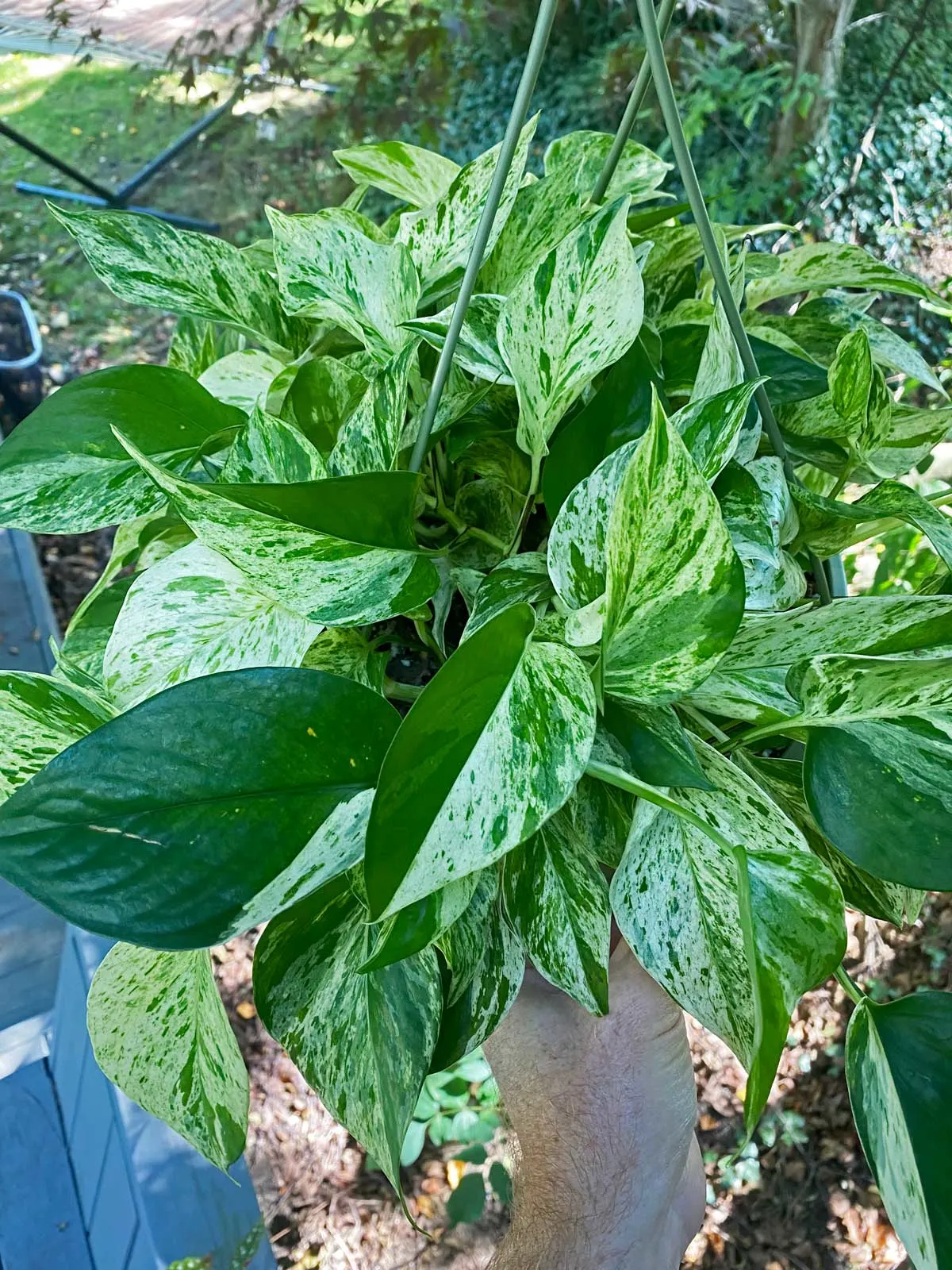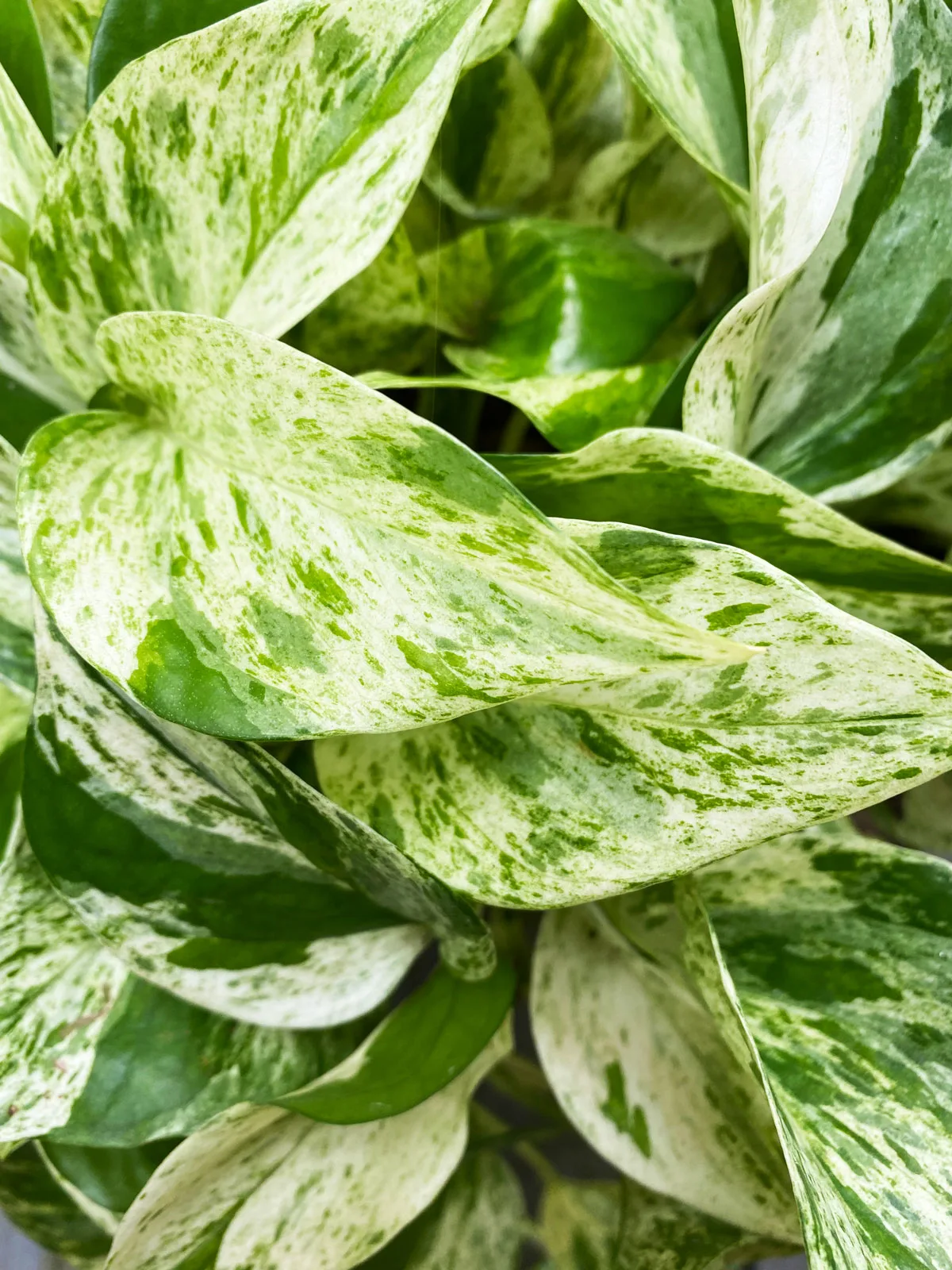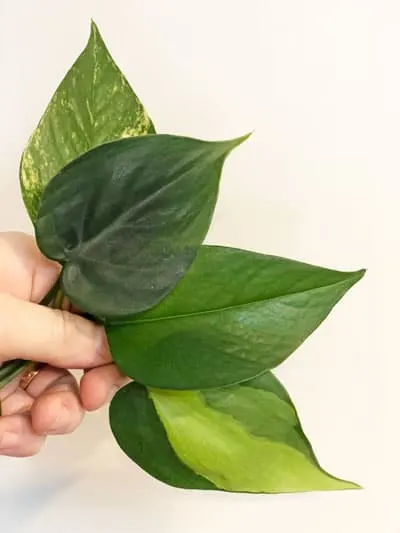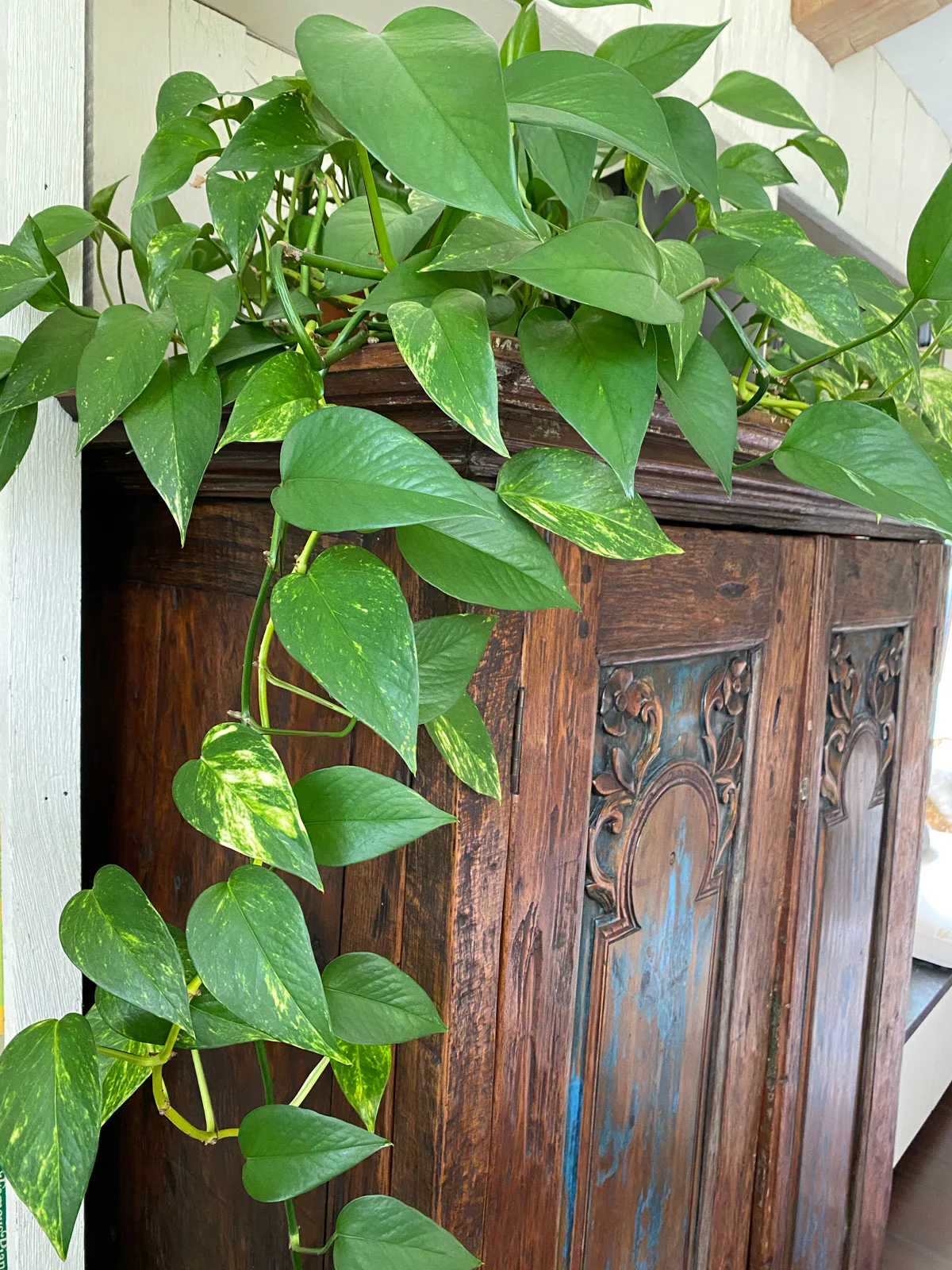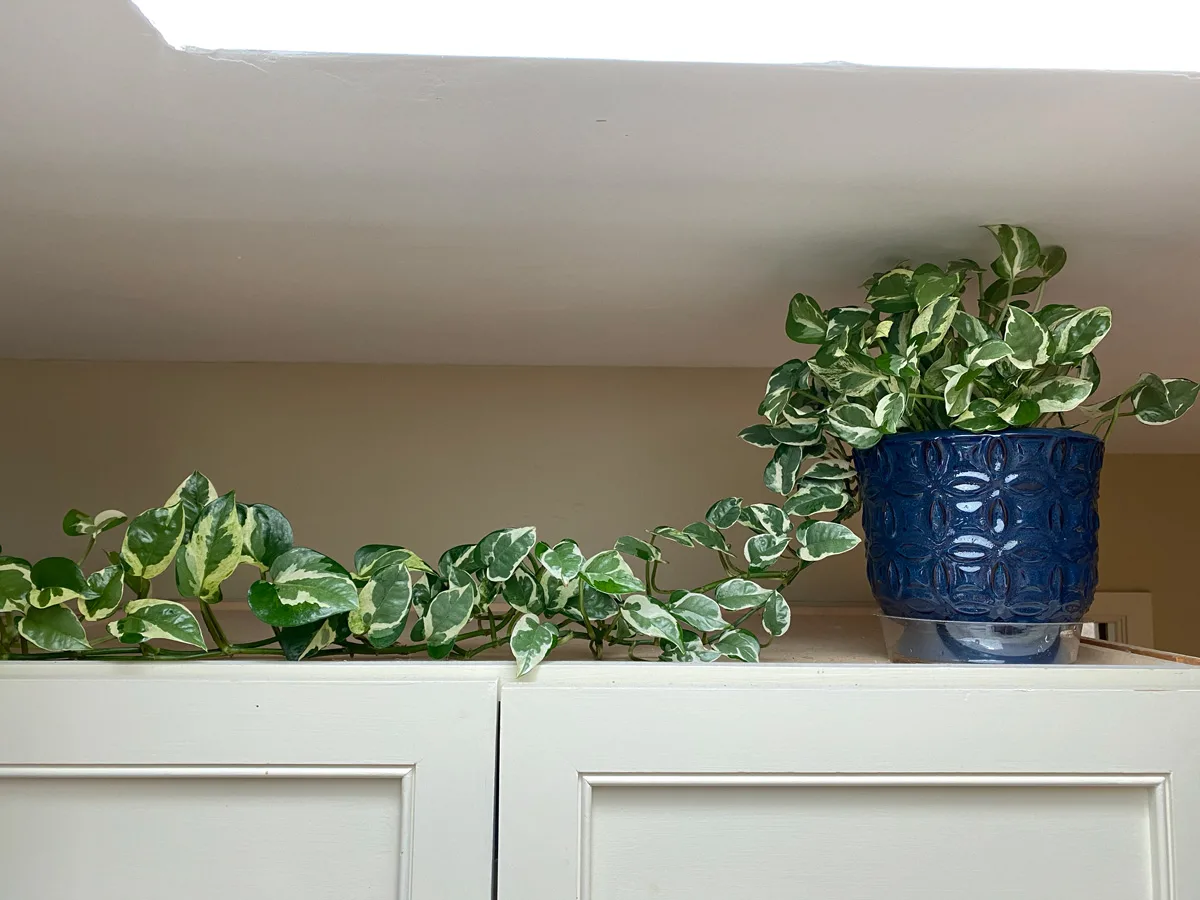Some of the links in this post may be affiliate links.
With so many beautiful Pothos varieties out there, ‘Snow Queen’ Pothos is a true beauty. Who can resist the highly variegated, heart shaped leaves? And with ease of care and propagation, what more can you ask for in a houseplant? Keep reading to find out how to care for this beauty.?
The scientific name for Snow Queen Pothos is Epipremnum aureum ‘Snow Queen’.
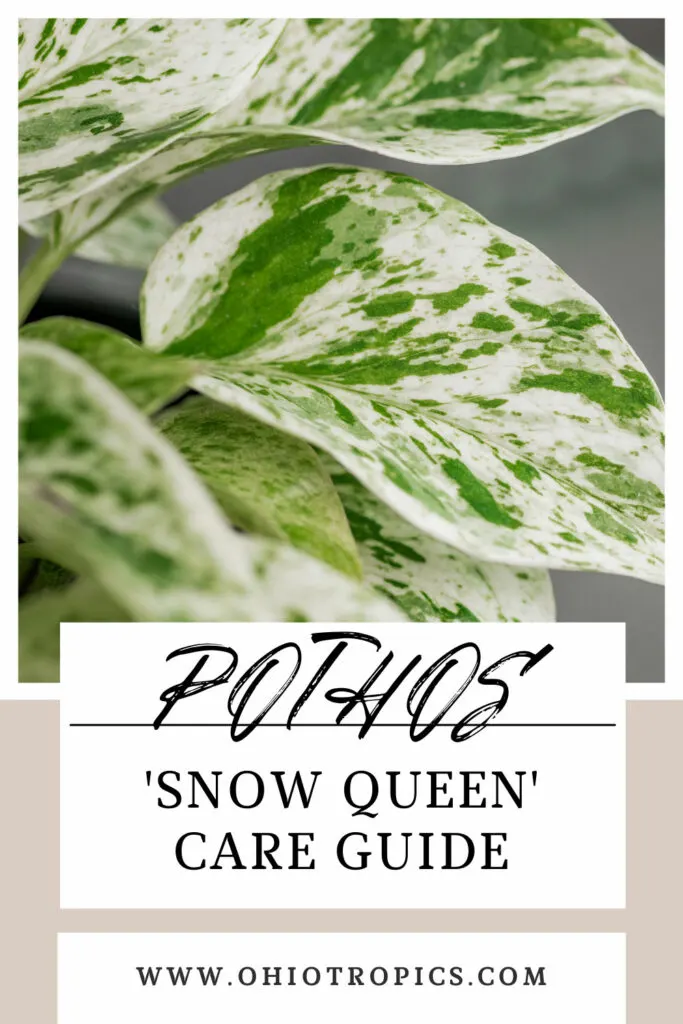
Table of Contents
POTHOS SNOW QUEEN CARE
1. LIGHT
For best results, in order to keep good variegation on your Snow Queen, at a minimum, place it in a nice, bright location that does not get any direct sun.
If you have an Eastern facing window, this would work well for your plant. Unobstructed Eastern facing windows get morning sun, which is gentler than mid-day or afternoon sun.
Avoid mid-day sun which can be harsh and potentially burn your leaves.
Whatever you do, don’t keep your plant far from a window, otherwise dim conditions can result of your plant losing its beautiful variegation.
2. SOIL
Use a potting mix that has excellent drainage. I find that pre-packaged all-purpose potting mixes don’t provide enough drainage.
For your Snow Queen, I recommend using 2-3 parts of an all purpose potting mix to which you can add 1 part perlite or
Be sure not to miss my post on perlite vs pumice to discover the pros and cons. Either perlite or
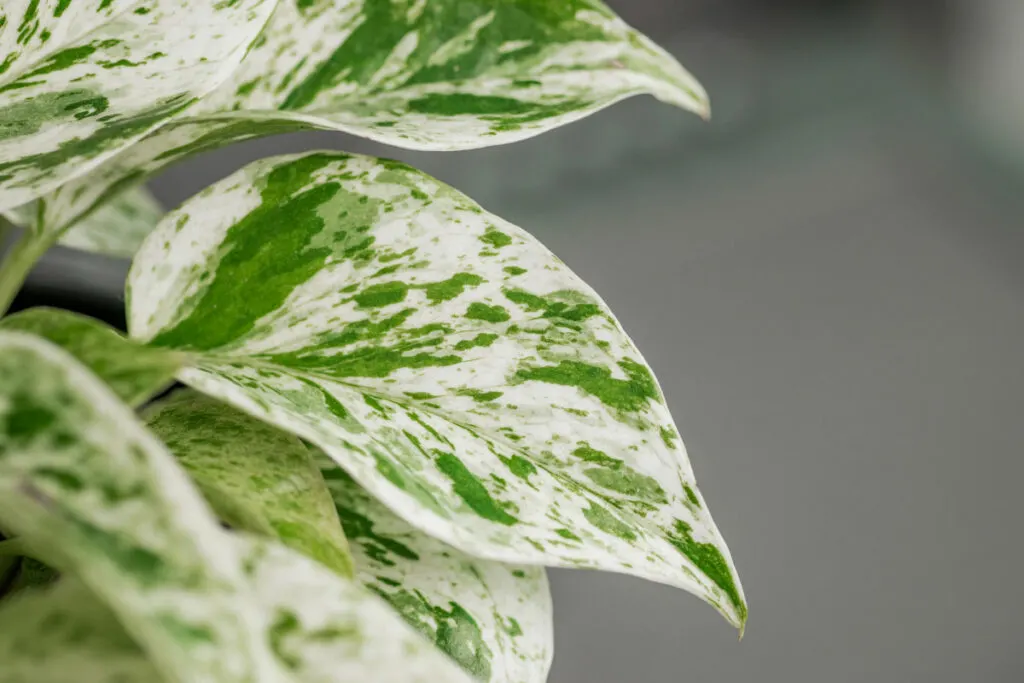
If you’re looking for an amazing potting mix that you can use straight out of the bag for your Pothos, check out the Tropical Climber Soil Blend from Oh Happy Plants. This is an amazing mix and you will get 10% off at checkout automatically if you use my link.
3. REPOTTING
If your plant is root-bound and needs to be repotted, only go up one pot size and be sure to use a pot with a drainage hole.
Wait until you have roots coming out of the drainage hole before even considering repotting.
Once you take your plant out of the pot, loosen the root ball a bit. Gently tease some fo the roots loose. This will make it easier for your plant to grow new roots in its new pot.
And when you do repot, only go up one pot size. For example, if you have your plant in a 4 inch diameter pot, only go up to a 6 inch diameter pot.
If you go any bigger, the excess soil will take much too long to dry out and potentially cause you issues.
4. WATER
Always water your plant thoroughly until water escapes the drainage hole(s). Don’t water again until you can feel at least the top inch of the soil dry out completely.
Avoid letting your soil go completely dry though. If you leave your soil completely dry for too long, it can cause yellow leaves and browning.
Avoid using soil moisture meters as many of them are junky and notoriously unreliable.
5. FERTILIZER
I like to fertilize all Pothos, including Snow Queen. Since it’s a slower grower, it doesn’t need as much fertilizer as other Pothos varieties.
Still, it is important to fertilize for best results. I use
I’ve been using it for years, and you will see a remarkable difference with your plants over time!
6. TEMPERATURE
Pothos in general are warmth-loving plants. If you keep your plants too cool, they will sit there and not budge.
Aim to keep your plants at a minimum of 65°F (18°C) for best results, and up to a maximum of 85°F (29°C).
7. HUMIDITY
Pothos are generally pretty tolerant of average indoor humidity, but they will enjoy higher humidity if you can provide it.
Find out how to increase humidity (and misting does NOT
In fact, if you overdo the misting, you will increase the chances of your plant having fungal issues (especially if your air circulation is very poor).
8. PROPAGATION
Propagating Pothos ‘Snow Queen’ is very easy and you can use the following process for any pothos.
- Take some cuttings, but don’t make them too long. To make the most efficient use of your plant, you can take single node cuttings, like in the photo below of a Golden Pothos.
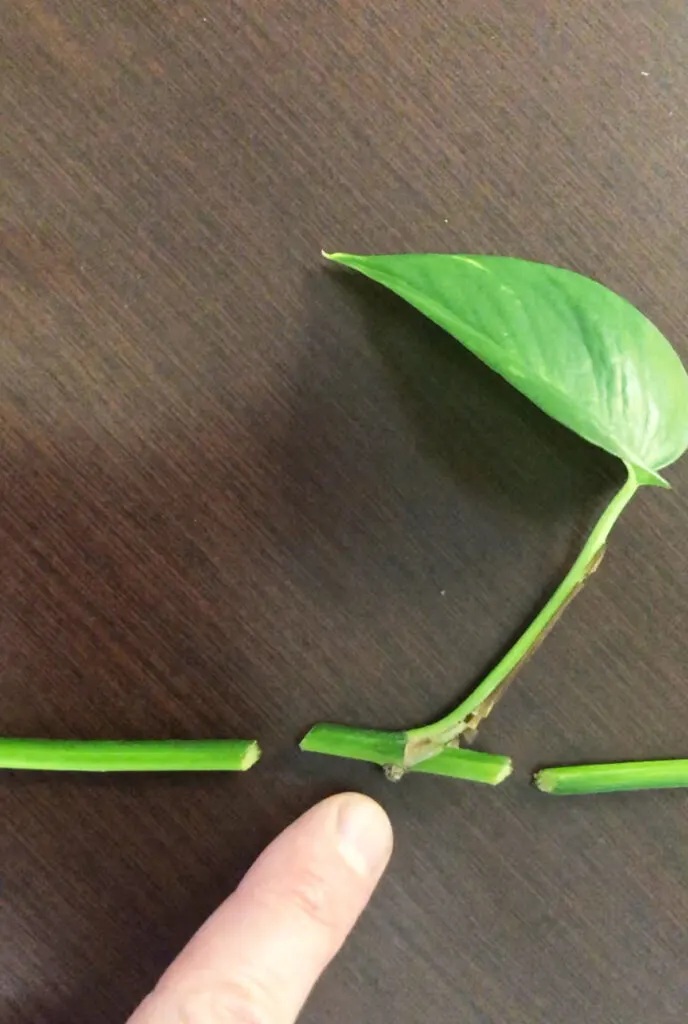
You can make the cuttings longer, but if you make them too long, they will struggle. Make sure your cuttings are no longer than about 6 inches or so.
- Next, place your cuttings in water so that at least the bottom node is under water.
- Place your propagation vessel in a bright area, but not in an area that gets a lot of direct sun.
- Once the roots are about an inch long or so, go ahead and pot them up. If you wait until the roots get much longer, they will take longer to acclimate to soil.
For a more details, visual, step-by-step guide to propagating any Pothos, read my Where to Cut Pothos to Propagate post.
If you are having trouble propagating your Snow Queen, be sure not to miss my blog post that details all the common mistakes that people make in propagating Pothos: Pothos Not Rooting? Top 10 Secrets Why You’re Failing.
COMMONLY ASKED QUESTIONS
What’s the difference between Snow Queen and Marble Queen?
It is best to visually see the difference between Snow Queen and Marble Queen below.
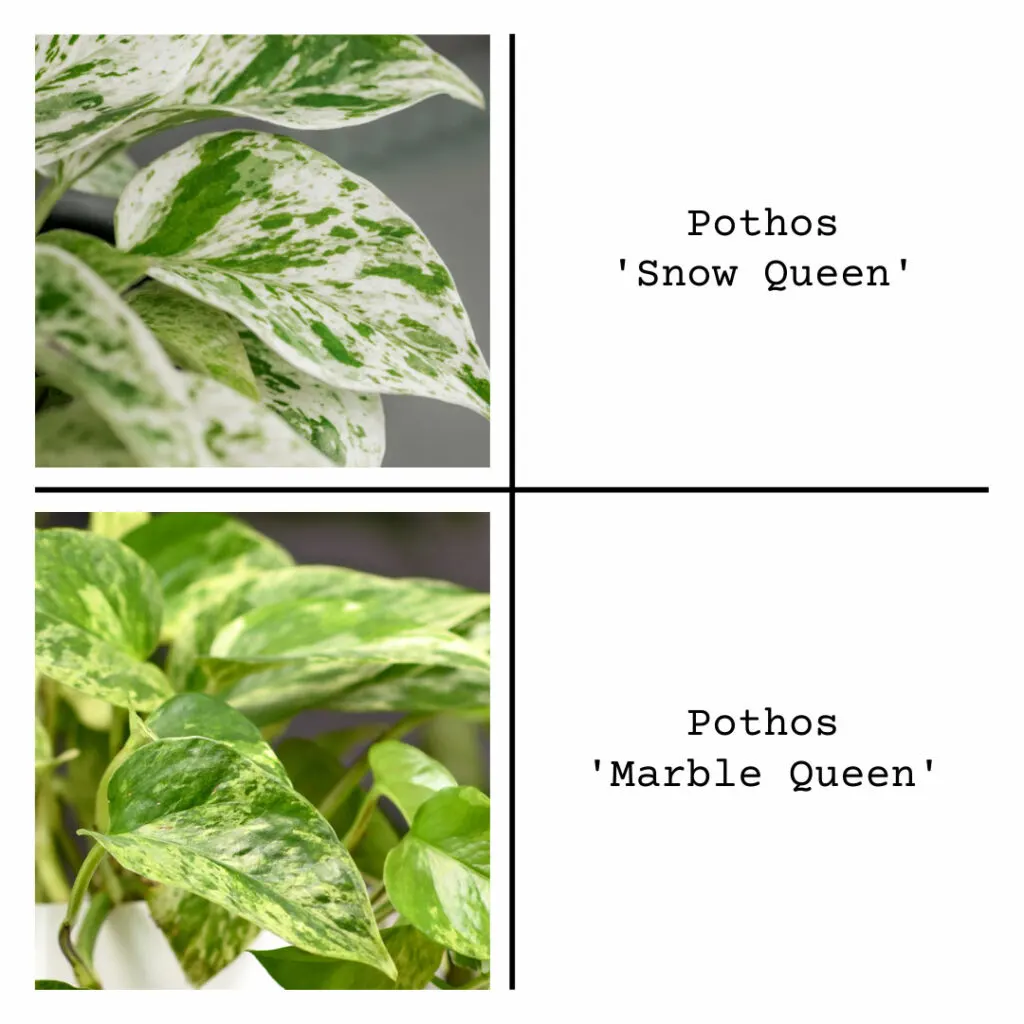
You can clearly see some differences between Snow Queen and Marble Queen:
- ‘Snow Queen’ has much more variegation than ‘Marble Queen’
- ‘Snow Queen’ generally has a whiter variegation than ‘Marble Queen’
The care, however, is identical. They are the same species of plant (Epipremnum aureum) but just different cultivars (cultivated varieties).
Is Snow Queen Pothos slow growing?
Typically, the more variegated a plant is, the slower it will grow because it lacks the chlorophyll that the all-green version of the plant has. This is exactly the case with Pothos ‘Snow Queen’.
It is perhaps one of the slowest, if not the most slowly growing of the Pothos varieties, but of course the growth rate also is highly dependent on your growing conditions.
Why is my Snow Queen Pothos turning brown?
There are numerous reasons why your Snow Queen leaves are turning brown. In general, browning leaves can be due to:
- Soil being too dry
- Soil being too wet
- Water quality issues
- Plant needing to be repotted
- Fertilizer burn
- Low humidity
- Pests
- Fungal or bacterial issues
- Too much direct sun
These are all general issues that can cause browning on leaves.
Something specific to highly variegated plants though is that if you have leaves that are all white, know that those leaves will not last forever since there is no chlorophyll.
Those all white-leaves will eventually turn brown and die.
If you have some all white leaves, you can try pruning your pothos back to encourage more balanced variegation. You can also prune back if your plant ever reverts to having less variegation, or even solid green leaves.
Is Snow Queen toxic for pets?
Yes, Epiprenum aureum is toxic to dogs and cats due to insoluable calcium oxalates, according to the ASPCA.
How to keep Snow Queen white?
Most variegated plants need a good amount of light in order to stay variegated. Be sure to place your ‘Snow Queen’ right in front of a window for best results.
At a minimum, choose a window that gets no direct sun, but some direct sun is ok. Just don’t overdo it.
Why is my Snow Queen turning yellow?
There are numerous reasons for yellow leaves in plants. Probably the most common reason is soil that has gone too dry.

